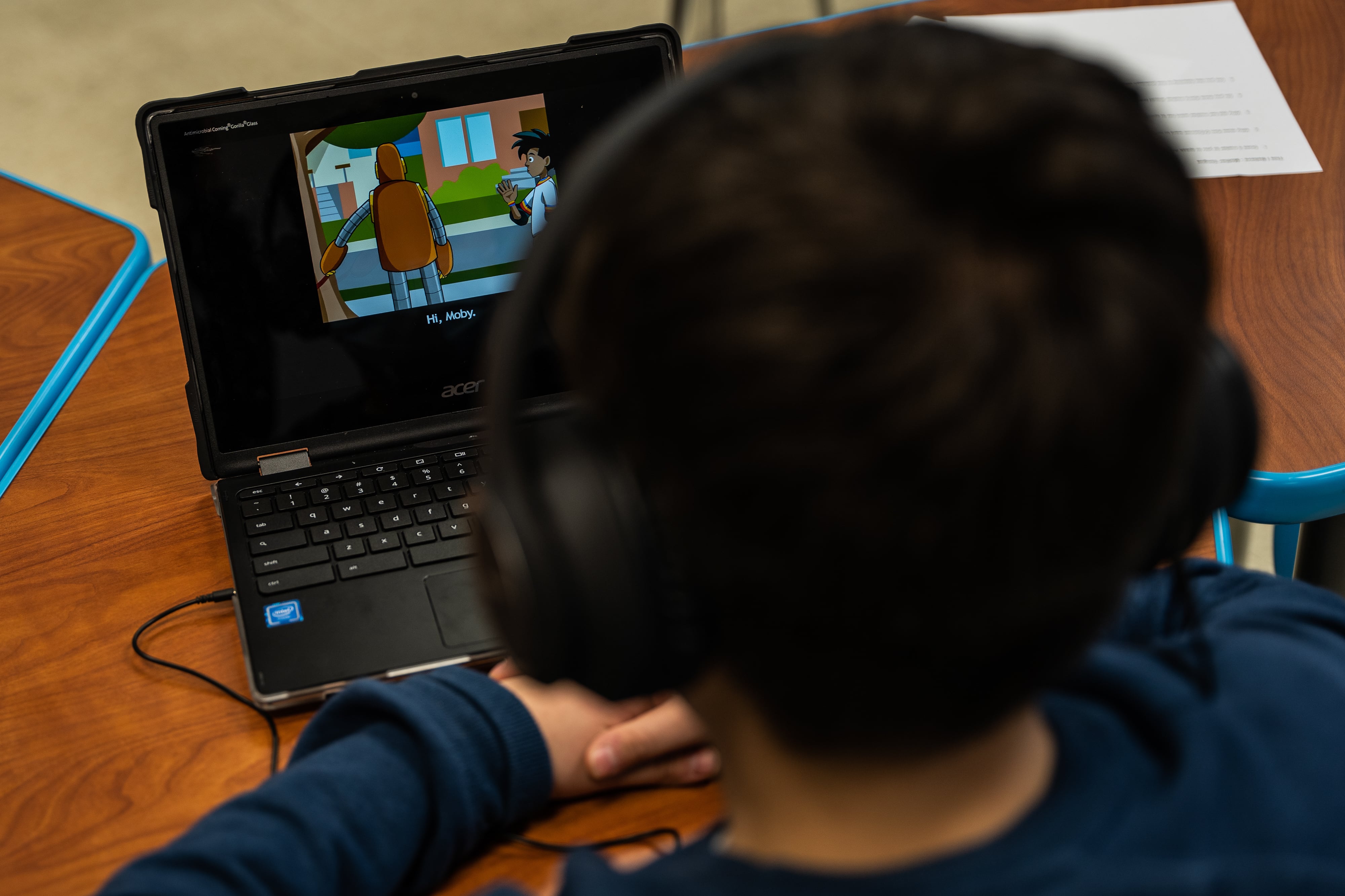As Indiana lawmakers prepare for budget discussions in next year’s legislative session, school officials are pressing them to reconsider their approach to additional funding earmarked for students who live in poverty.
That funding, which schools receive in addition to base funding for all students, has not kept pace with schools’ actual costs, local district officials told members of a state legislative committee last week.
The problem is further exacerbated by the fact that programs for English learners and special education are underfunded, district leaders said, forcing schools to stretch dollars to serve more than just impoverished students, but students who need other additional services as well.
Rep. Greg Porter, an Indianapolis Democrat who brought the issue to the committee, said he hopes such concerns lead to a discussion about adequate and equitable funding during next year’s legislative session.
Here are three key points that the committee’s Oct. 12 hearing covered.
Base funding leaves big gaps
Indiana’s base funding for all students has increased from $4.75 billion in 2015 to $6.3 billion in 2023, the Indiana Urban Schools Association told lawmakers in a presentation.
Yet the association found that additional aid for students in poverty has decreased from $1.15 billion to $700 million in the same time period. (It wasn’t immediately clear if the figures had been adjusted for inflation.)
The result is that funding for schools with fewer students who live in poverty has increased faster than funding for schools with more students who live in poverty, the association said. The latter still receive more money per student on average due to the overall increases in basic funding.
Supplemental funding is meant to fund case managers, counselors, alternative programs, and classroom assistants.
Lawmakers also gave special education funding a $196 million boost in the 2021 budget. But schools sometimes still spend more on special education than they receive from the state’s special education grants to districts, advocates and district officials said.
This can leave schools to draw from their general fund — which includes the money they receive from the state for students who live in poverty — to cover special education expenditures.
Schools struggle with English learner services
Schools receive both federal funds and state funds specifically for educating English learners. But the federal money generally can’t cover teacher salaries, and schools may have to turn to the supplemental funding marked for students in poverty.
Meanwhile, the population of English learner students in Indiana has grown by 42% since 2017. That’s left districts unable to meet staffing recommendations set by the Indiana Department of Education, even as they try to spread dollars between different student groups. The department recommends one teacher for every 30 English learners.
For example, Fort Wayne Chief Financial Officer Kathy Friend said the district uses $4.5 million of its $30 million complexity grant to hire teachers to serve English learners.
The district also used $3.4 million of its federal emergency funds to bring student-to-teacher ratios down from 50-to-1 to 40-to-1, she said. (Indiana received roughly $3.1 billion in federal pandemic aid for state education agencies and school districts.)
But in spite of using other funding to hire those teachers, Fort Wayne would need around $2 million to add 30 more teachers and reach the state’s recommended ratio, Friend said.
“It’s a huge issue for us,” Friend said.
Bartholomew Community Schools spends $578,000 of its education fund on English learner teachers and has a ratio of 70 students per teacher, said Chad Phillips, the district’s assistant superintendent for financial services. He added that funding is not the only challenge in the face of statewide teacher shortages.
“If we posted 10 [English learner] positions today, we’d get one applicant,” he said.
To help address the issue, Phillips suggested integrating funding for English learner students into the base or supplemental funding, instead of keeping it as a separate grant that must be renewed.
Counting kids who qualify isn’t easy
Officials also expressed concern that students who receive special education or English learner services don’t necessarily count toward a school’s allocation of state aid for students with additional education needs.
That allocation is determined by the number of students at a school who are enrolled in food assistance programs, or who are in foster care. Families enroll in those programs through the Family and Social Services Administration, and the Indiana Department of Education matches the children to their schools to determine this funding.
Indiana and Illinois are the only states to rely on certification through benefit programs, according to the Indiana Urban Schools Association’s presentation.
Indiana switched to this system in 2015. Before that, the state relied on a school’s population of students who receive federally subsidized meals to determine the supplemental state aid — a common approach in other states. Since then, the number of students identified has dropped from 250,000 in 2015 to 187,000 in 2022, according to the state’s urban schools group.
The new system was meant to provide a more accurate count. But critics say it misses students, either because their families don’t enroll in assistance programs, or because the agencies’ systems don’t align.
In Fort Wayne, for example, around 67% of students qualified for subsidized meals, according to the district’s presentation, while 29% were identified under the method based on food assistance and foster care.
Rethinking the methodology for how students in poverty are identified is a priority, Porter said.
“Those numbers are not adequate and not accurate,” Porter said of the current system.
Tell Chalkbeat about English language learning
If you are having trouble viewing this form, go here.
Aleksandra Appleton covers Indiana education policy and writes about K-12 schools across the state. Contact her at aappleton@chalkbeat.org.







